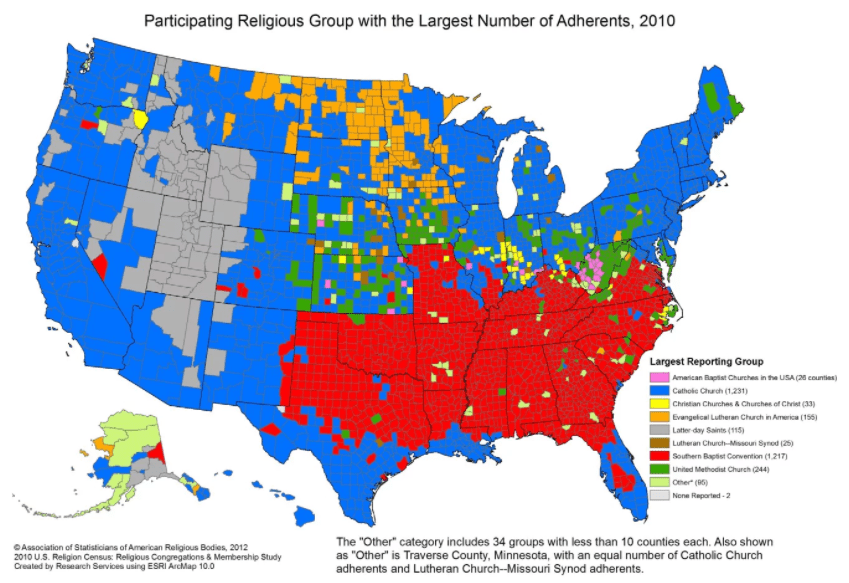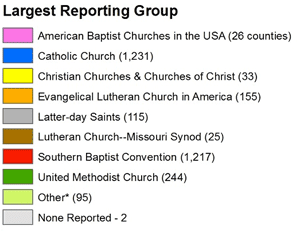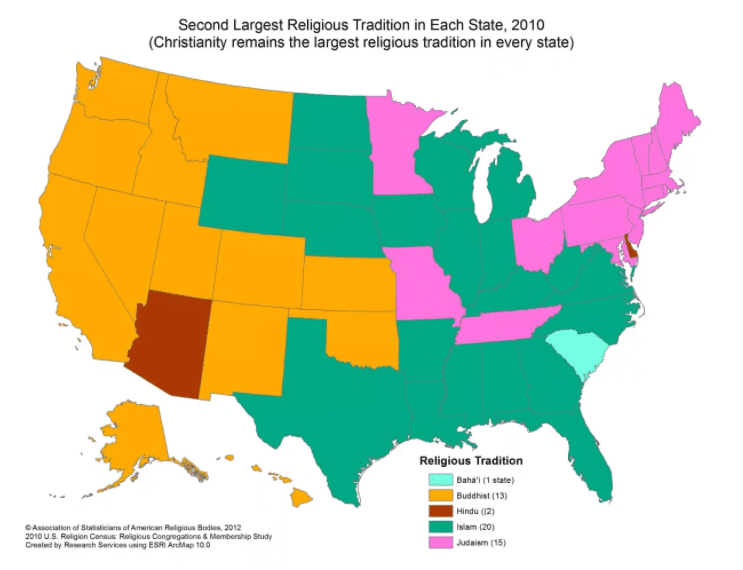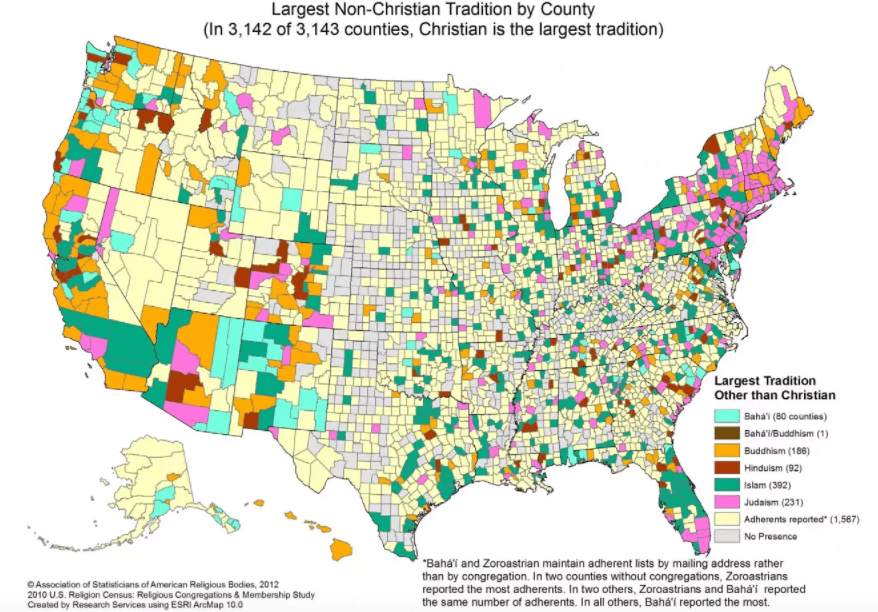The first documented mention of Christianity from a non-Christian perspective can be traced back to a correspondence in 112 AD between Pliny the Younger and Emperor Trajan. In this letter, Pliny sought guidance on handling a novel and ‘excessive superstition’ that had permeated various urban centers in Northern Turkey. In addition to this account, other […]
Ethiopia adopted Christianity in 330 AD…
Ethiopia adopted Christianity in 330 AD, just 17 years after the Roman empire. Despite the rise of Islam, fall of the Byzantine Orthodox Church, and being cut off from all other Christians for centuries Ethiopia remained Christian. They remain the only majority Orthodox Christian African nation.
The post Ethiopia adopted Christianity in 330 AD… appeared first on Crazy Facts.
10th century Norwegian Viking ruler…
10th century Norwegian Viking ruler King Haakon the Good made the household production of Juleøl (Christmas Beer) a law. Families that did not have beer at their Christmas feast were issued a fine. Long before Christianity made its way to the native Germanic peoples, Norwegians celebrated the winter solstice by brewing and drinking beer to […]
The post 10th century Norwegian Viking ruler… appeared first on Crazy Facts.
Crazy Facts 2020-07-28 20:15:12
Constantine XI Palaiologos was the last Christian Emperor of Constantinople and the Byzantine empire. In 1453, when Constantinople fell to the Ottoman Turks, he was last seen fighting at the city walls, but the actual circumstances of his death have remained surrounded in myth.
The post appeared first on Crazy Facts.
A Megachurch Pastor Got Slammed for a Tweet about Truth and Gossip
Mega-church pastor John Hagee (who is also a millionaire) has come to be one of those figures that typifies why so many are frustrated with American Evangelicalism today.
From his support of Donald Trump to his downright bizarre brand of bigoted sermonizing, Mr. Hagee has a slippery relationship with ethics.
Which makes one particular tweet from him a pretty strange case study in Biblical interpretation.
If you are not an eyewitness, you are a false witness (Exodus 20:16). If you didn’t see it, you shouldn’t be gossipping about it. – @PastorJohnHagee
— Pastor John Hagee (@PastorJohnHagee) January 12, 2020
It’s not clear why he chose to make this statement (possibly commenting on the Trump impeachment trial?), but whatever the reason, there’s a lot to unpack. Few would argue that gossip is a good thing, but what about the rest of the tweet?
— Emmanuel Fonte

(@EmmanuelFonte) August 22, 2019
First of all, that’s not what the verse says. The passage Hagee cites here is part of the Ten Commandments, and it reads:
“You shall not give false testimony against your neighbor.”
– Exodus 20:16, New International Version
You can check other translations if you want. None of them say anything about being an eyewitness. Just that you shouldn’t bear false testimony. In other words, don’t lie about stuff.
John Hagee says if you didn’t see it yourself, anything you say about it is a lie. Which of course isn’t how anything works, but is especially problematic for his line of work.
So screw John 20:29 then, right? Jesus must not have known what he was talking about.
— Andrew Meissner (@AndrewMeissner) January 18, 2020
As lots of people were quick to point out, this sentiment basically contradicts the entirety of Christianity.
“Then Jesus told him, ‘Because you have seen me, you have believed; blessed are those who have not seen and yet have believed.’”
– John 20:29, NIV“Now faith is confidence in what we hope for and assurance about what we do not see.”
– Hebrews 11:1, NIV
Gospel writers: pic.twitter.com/4I8aUYL8ct
— Mr. Rip 23 (@MrRip231) January 12, 2020
And of course, even Biblical authors themselves were not eyewitnesses to the events they wrote about.
The gospels were written decades after the fact. Decades!
— Moby (@elusivemoby) January 18, 2020
Most Biblical scholars – believers and non-believers alike – agree that the four Gospels (the section of the Bible that covers the life of Jesus) were written between 66 and 110 years after the fact. We don’t even know who wrote them, but whoever they were, they certainly didn’t experience any of it in person.
You might want to rephrase that before you completely undermine your entire evangelistic outreach efforts.
— Stacey Shiflett
(@staceyshiflett) August 21, 2019
Honestly, screwing up on this many levels in one tweet is almost impressive.
I think this is the first time I’ve seen someone miss their own point
— Mr.Torgue but upside down (@_HiImShoe) January 14, 2020
What do you think of all this?
Let us know in the comments. But behave yourselves in there.
The post A Megachurch Pastor Got Slammed for a Tweet about Truth and Gossip appeared first on UberFacts.
12 Fascinating Facts About the Sistine Chapel
If you’ve ever gazed up at the Sistine Chapel, you know it’s a one-of-a-kind experience.
The famous artwork that defines the Sistine Chapel has drawn tourists and landed on travel bucket lists since, well, probably since Michelangelo and his crew (including one Sandra Botticelli) completed work in 1481. They created the whole thing in less than 5 years, and it has stood the test of time, both architecturally and artistically.
But whether you’ve visited or not, there’s a good chance you’ve missed at least some of these facts about the famous Vatican City monument.
12. Adult Jesus is not depicted.
None of the ceiling murals feature an adult Jesus, and the reason for that is that the scenes are all from the Old Testament, when the Christ only appears as a figure to come in the future.
He is depicted as a young man in the altar mural The Judgement Day.
11. There was a special scaffolding built in order to allow for the height of the ceilings.
Michelangelo himself designed the vertical scaffolding, which attached to beams on the walls of the chapel, allowing him to work over the entire surface of the ceiling while also letting people to move about on the chapel floor. In fact, services went on during the painting – though the people below wouldn’t have been able to see the master’s work until after the scaffolding was removed.
10. Michelangelo didn’t paint the ceiling lying down.
You might have an image in your mind of the artist lying on his back, paint dripping in his face, but in reality he stood and craned his neck back. The process earned Michelangelo ear infections, arthritis, and scoliosis that he lived with for the rest of his life.
9. Some of the symbolism only made sense at the time.
Image Credit: Wikimedia Commons
The oak leaves and acorns, for example, are a reference to the family crest of Pope Julius II – the pope at the time.
8. Michelangelo was one of the first people to imagine the face of God.
Image Credit: Wikimedia Commons
The famous image of God in The Creation of Adam was the first in history to depict the deity in motion – he was typically seen as a symbol (like a hand alone).
7. Not all of the images are Christian.
Image Credit: Wikimedia Commons
Along with the 7 prophets of Israel, some of the side pictures are of 5 of the 10 Sibyls – oracles of Ancient Greece who were believed to be able to predict the future.
6. It contains the lineage of Jesus – or most of it.
The lunettes (the space under the arches above the windows) feature the ancestors of Jesus, though 2 were removed to make room for the entire Last Judgement mural.
5. There’s a lot of debate surrounding the images of God.
Some people believe that the silhouette of fabric around God resembles the human brain, and that the people crowding God symbolize the different parts of the brain.
Others argue that the clothing represents the womb, with the green scarf meant to be the severed umbilical cord, and that the entire image is meant to show how Adam was “born” (and explains his belly button in the process).
4. Michelangelo didn’t create the ceilings alone.
Image Credit: Wikimedia Commons
Data collected during the restoration undertaken between 1980-1994 revealed that at least 3 other people helped draw the putti (boys common in the Renaissance period) and different architectural parts.
3. There are some issues with the scenes depicting Adam and Eve.
Image Credit: Wikimedia Commons
The Bible does not specify what kind of fruit Adam and Eve ate, but the tree in The Expulsion from Paradise mural is a fig tree. Also, it’s interesting to note that Adam and Eve are frowning and unhappy before they try the apple and beautiful and inspired after they disobey God, leaving one to wonder as to Michelangelo’s thoughts on Christian dogma.
Not so subtle? The fact that the serpent is drawn as a woman.
2. There might be a self-portrait inside the Judgement Day rendering.
Image Credit: Wikimedia Commons
It is said that Michelangelo drew his own portrait in the skin held by Bartholomew because he was suffering at the hands of the church – he didn’t want to paint the murals at all.
Most experts deny this assessment.
1. The artists used a technique known as “fool-the-eye.”
The technique is more commonly known as Trompe-l’œil, and when used it causes murals to give the impression that the stories are separated by architectural elements like pilasters, edges, and ledges that are in fact, pseudo-3D images painted onto a flat surface.
These just make me want to visit even more!
The post 12 Fascinating Facts About the Sistine Chapel appeared first on UberFacts.
Here are the Largest Religious Groups Across Every County in the America
Do you ever wonder what exactly is the breakdown of religious groups where you live? As I drive around town, I see churches, mosques, and temples, and I ask myself that question all the time.

Photo Credit: Pixabay
The Washington Post gathered data from the Association of Statisticians of American Religious Bodies to put together the following map, which will answer all of those questions for you. As you can see, certain regions of the country are strongly dominated by one religion, especially the South and the Northeast.

Photo Credit: Mental Floss
Here’s a larger version of the key so you can get a good idea of what’s going on in your community.

Photo Credit: Mental Floss
Here’s what their map of the second-most practiced religions in each state (besides Christianity) looks like.

Photo Credit: U.S. Religion Census
And here’s the county-level map of second-largest religions after Christianity.

Photo Credit: U.S. Religion Census
Pretty interesting, right?
(h/t: Mental Floss)
We know you can choose a lot of sites to read, but we want you to know that we’re thankful you chose Did You Know.
You rock! Thanks for reading!
The post Here are the Largest Religious Groups Across Every County in the America appeared first on UberFacts.
In Japan, back when Christianity…
In Japan, back when Christianity was illegal, people were told to step on this plaque with a picture of Mary or Jesus on it to prove that they weren’t Christians.
Spiritualists, Mormons, Shakers, Jehovah’s Witnesses, and Adventists…
Spiritualists, Mormons, Shakers, Jehovah’s Witnesses, and Adventists all originated from relatively the same place (upstate New York) and the same time (early 1800s). 00
Mary (mother of Jesus) is considered one of the most righteous women in the…
Mary (mother of Jesus) is considered one of the most righteous women in the Islamic religion. She is mentioned more in the Quran than in the entire New Testament.








